Due to their disproportionately high levels of endemism – having species found nowhere else in the world – island ecosystems often represent regions of both high conservation value and concern. As bodies of water acts as barriers-to-entry for flightless colonizers, most oceanic islands are exceptionally lacking in mammalian species, particularly carnivores. During my RCN lab exchange, I visited Santa Cruz Island (SCI), the largest of the Channel Island archipelago, which is unique in that it supports two endemic carnivore species, the island fox (Urocyon littoralis) and the island spotted skunk (Spilogale gracilis amphiala).
Both foxes and skunks are thought to have first been transported to the island around 13,000 years ago by Native Americans, becoming classified as distinct species from their mainland counterparts after millennia of genetic isolation. Between the two, the island foxes are most well-known as one of the greatest success stories in North American wildlife conservation. NPR along with other popular science news outlets have thoroughly chronicled both the plight and resurgence of the Channel Island fox. In short, as fox populations were severely threatened by exotic pigs and golden eagle colonizers during the 1990s, focused conservation efforts by The Nature Conservancy (TNC) and US National Park Service, helped the endangered island fox make a full recovery. However, where the story of the foxes “ends” is also where the story of our skunks begins…

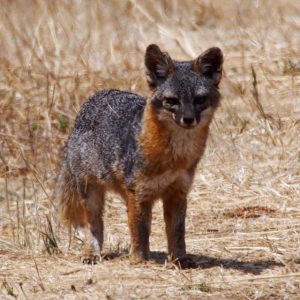
While historically rare, the island spotted skunk on Santa Cruz Island experienced a dramatic increase their population between 1992 and 1999 that was concomitant to a sharp decrease in island fox numbers during the same period. And like the sway of a pendulum, as island foxes were brought back from the brink of extinction between 2008 to 2016, island skunk numbers again appeared to experience a multifold decrease. Since SCI experienced drastic changes in land ownership and usage over the past 50 years, this “teeter-totter” relationship between the island fox and skunk may not be as simple as a classic boom-and-bust population growth cycle. Whether this recent decrease in skunk abundance can ultimately be attributed to habitat change, drought response, and/or competition with the island fox is currently unknown. Adding to the mystery, almost nothing is known about the basic biology of the island spotted skunk – When exactly are they most active? How are different island habitats used by skunks? How do they partition their activity across the day? Across the year?
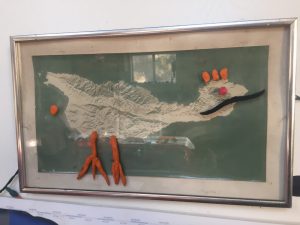
In summer 2018, Christie Boser (host principal investigator) of TNC began a study on the spatial ecology and interactions of the island spotted skunk and island fox, the purpose of which is to inform future monitoring and management of both populations on SCI. NAU graduate student, Calypso Gagorik, was tasked with leading this effort and GPS-collars were deployed on both species to understand how populations use habitats across space and time. Supplementary to this ongoing study, this lab exchange was created in order to implement the usage of a new tool, accelerometers, on island foxes and skunks to better understand why the recent shift in island carnivore community structure occurred.
Accelerometers are essentially little collar-mounted pedometers or “fitbits” that biologists can use to noninvasively track and study the movement patterns of wild animals across the year. This device is integral to the methodology of my PhD dissertation, and after a few phone conversations with Christie and Calypso, we determined that it would be a worthwhile collaboration to pursue. Earlier this spring, Calypso deployed eight accelerometers and on six foxes and two skunks. The objectives for this RCN lab exchange was for me to (1) travel to SCI to assist Calypso in the retrieval and redeployment of accelerometers, (2) help in performing some preliminary analyses of data generated from retrieved devices, and (3) to discuss with Christie the feasibility and usage of accelerometers in future SCI studies.
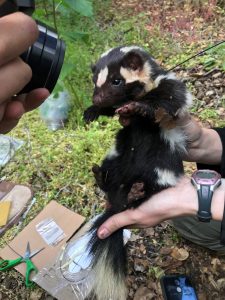
On May 5, my ferry took me to Prisoner’s Harbor, located on the northern side of SCI. There, I was greeted by Calypso, an island veteran who would be my crew leader for the next two weeks. After a short drive to the central valley, I was introduced to my modest accommodations at the TNC cabins, where field technicians are usually housed. Cooking up some lunch in the kitchen, I met the last member of skunk crew, AnaRose Hebein (Ana), a recent college graduate and summer field technician. It was essential to get the pecking order established up front, and in jest, Calypso would be known as “Skunk 1”, Ana as “Skunk 2”, and myself as “Skunk 3” for the duration of the trip.
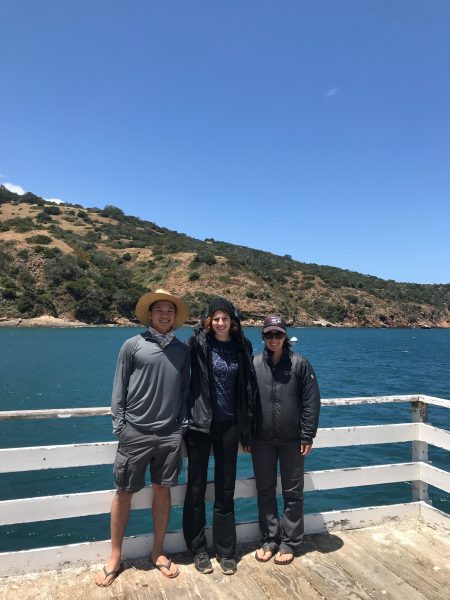
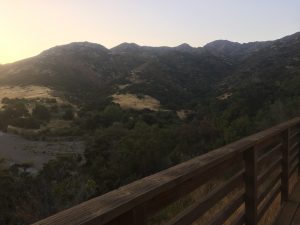
The very next day, skunk crew rose at the break of dawn to get a head start on checking traps that were opened the previous afternoon. These traps were all set in prime skunk real estate, which includes drainage basins overgrown with low-lying shrubs and prickly understory flora. Bushwhacking was the name of the game. As expected, multiple foxes took the bait in our traps, but we were looking for the elusive spotted skunk…
And just like that, in one of our last traps, we captured an island spotted skunk! Calypso assured me that this was a rare event, and I was very lucky to have seen one on my first day of trapping. Within seconds of startling the animal, he let it rip – better than expected. After working with mainland striped skunks in the past, I can comfortable say that the musk of the island spotted skunk is mild in comparison. We then recorded the weight of the skunk and left him to rest as we returned to the cabins to gather supplies to process the animal. After anesthetizing the animal, affixing him with a new collar, and allowing him time to recover, we released the first spotted skunk of my trip just as the sun dipped low.
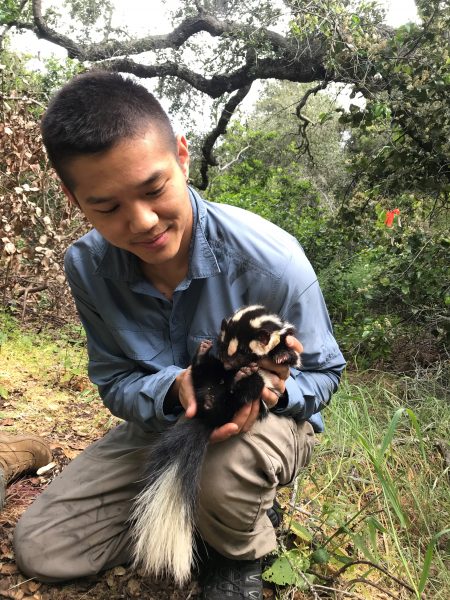
Throughout the season, Calypso and Ana had been keeping tabs on all collared animals via radio tracking. Radio tracking wildlife is a lot like a game of “Marco Polo”. It involves using handheld antennas to listening to radio pulses that collars will periodically emit to determine the bearing and distance of an animal. There is an art to effective radio tracking. Signals often bounce across a landscape which obscures their true location. Ana was one of the most effective trackers on skunk crew, and she had followed one particular female skunk for multiple days since my arrival. This female was one of our originally accelerometer-deployed animals from spring, and we needed to catch her in order to retrieve our precious data! After a four day stretch of the female skunk evading our traps, we decided to try a method I learned from previous work with striped skunks. Although not as elegant as setting baited traps, this tried-and-true method involves catching a skunk on foot using handheld fish nets.
We spent the next day locating the target skunk and soon found her sleeping under a shrub. With fish nets in hand, us three determined skunk wranglers converged on the bush, flushing out our little friend and scooped her up. The smell of victory. Unfortunately, the accelerometer from this individual happened to be the only skunk accelerometer recovered during my entire trip. The radio collar on the second accelerometer-deployed skunk from spring appeared to have failed, and he was nowhere to be found.

Over the course of my stay, we recaptured six foxes and one skunk that were deployed with accelerometers in spring. With devices in hand, I was able to perform some preliminary analyses during the night shift. Calypso and I had soon generated multiple figures illustrating how foxes and skunks might be utilizing time and space on the island. On one of my last nights, Christie made a trip to the island to meet with skunk crew and a private donor interested in investing in the project. This meeting with Christie was as much a celebration as it was a talk of science. After we were wined and dined on the main ranch, and with our bellies full, we got everybody situated in front of a projector to report our progress.
From data generated by the accelerometers, we found that the springtime activity patterns of foxes and skunks were quite different. While skunks appeared to exhibit a strictly nocturnal pattern of activity, foxes appeared to be active throughout all hours of the day and night. These findings suggest that if skunk and fox niches overlap, interactions are likely occurring during nighttime when skunks are most active. Moreover, two of our female foxes were lactating during the time of capture, and through examining signatures within the accelerometer data, we were even able to extrapolate when they likely gave birth earlier in the season! The next steps are to perform additional analyses that combine accelerometer data with GPS and radio tracking data to determine how animal movement patterns might correspond with specific habitat types found on the island. Such information might reveal the similarities and/or differences in how skunks and foxes utilize space on the island.
Overall, this laboratory exchange was a massive success! I accomplished all the key objectives set out at the beginning of the trip – recapturing multiple target animals, producing some very interesting preliminary data, and discussing the future of this study with our collaborators. Santa Cruz Island is truly a Californian treasure, and I feel blessed to have had the opportunity to contribute to its conservation. I want to extend my deepest thanks to Christie Boser for hosting my trip to the island, and Calypso Gagorik and AnaRose Hebein for being great friends and leaders that guided me throughout my stay, and Dr. Loren Buck and Dr. Tad Theimer for their support and encouragement on this project.